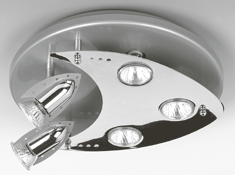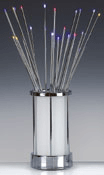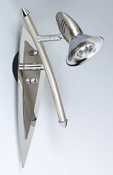
Endon Lighting
|
An 8-step Plan for Lighting Design To develop a basic lighting design plan, the following steps are recommended. Decide whether the room will be "designed", or whether
ordinary or utility lighting is adequate.
Step 1: Decide whether the room will be "designed",
or whether ordinary or utility lighting is adequate. If the room is a living space, dining room, kitchen or other finished space that is likely to have lighting design elements, then move on to steps 2-6. Step 2: Decide upon the style and decorative motif of
the room. Step 3: Choose your decorative lighting fixtures and decide
where they go. Step 4: Locate your tasks and illuminate them. Recessed downlights are located over task locations, especially in the kitchen, bath, shower, or at a desk. One recessed light may be all that is needed in a shower stall or tub, but in a kitchen a group of downlights often provides more flexible task lighting. It is best to locate downlights directly over a task, but in the kitchen keep in mind that the downlight will need to illuminate into the base cabinets as well, making fixture locations over the center of the room equally important. Undercabinet lights are used whenever there is an overhead cabinet above a counter, such as in a kitchen, laundry room or home office. Fluorescent undercabinet lights produce significantly more light than incandescent strips and use much less energy. A specific type of task light fixture is used in the bathroom, called a "vanity light". The purpose of this fixture is to illuminate the face - allowing grooming, shaving and makeup. There are a growing number of appealing fluorescent options available to designers, and many choices of styles using ordinary incandescent lamps. As a rule of thumb, provide 60 watts of fluorescent light or 150 watts of incandescent light for every 5' of sink or vanity width. Step 5: Locate the displays and illuminate them. A popular accent lighting system is recessed lighting and track lighting. Modern CFL technology can now be effectively employed with this system. Paintings can be illuminated with a warm tone CFL, using at least 23 watts. As a rule of thumb, mount the light 21" from the wall with an 8' ceiling, 27" from the wall with a 9' ceiling, 34" from the wall with a 10' ceiling, and so on. One accent light will illuminate anything from a small object (with a 10-15 degree "spot" lamp) to a painting up to 3' wide (with a 35-35 degree "flood" lamp). Add a second light for every 30-36" of width of the object your lighting. Step 6: Determine if additional ambient lighting is needed.
Ambient light is a primary concern in the kitchen, where table lamps and floor lamps aren't welcome because they get in the way. Some common ways to introduce ambient light in the kitchen are: Fluorescent uplights atop cabinets In other rooms, such as bedrooms or living rooms, ambient light can be introduced by portable lighting fixtures such as torchieres, floor lamps or table lamps. As an alternative to halogen torchieres there are now compact fluorescent torchieres. These fluorescent torchieres generate good quality dimmable light without the energy consumption and safety hazard of ordinary halogen torchieres. Step 7: Prepare and make lighting calculations as a check
and balance.
The proper location for a switch or dimmer is a function of code requirements (the National Electrical Code establishes some specific locations where control devices are required) and common sense. For example, the code requires a wall switch adjacent to the door upon entry to a room. But you can also add a switch in a preferred location, such as next to the bed. Another choice available today, are motion sensors that automatically switch lights. Motion sensors turn off lights when the room is empty, and they are especially efficient devices in spaces like garages, utility rooms and other spaces where lights are only needed occasionally and are often left on inadvertently. There are even more technologically sophisticated products that
permit handheld remote dimming, whole house master controls and
many other features.
|
|||||||||||||||||||||
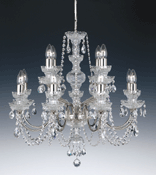 |
|||||||||||||||||||||
|
|
|||||||||||||||||||||
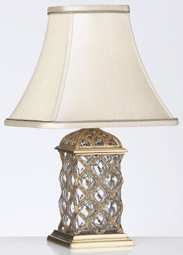 |
|||||||||||||||||||||
|
|
|||||||||||||||||||||


